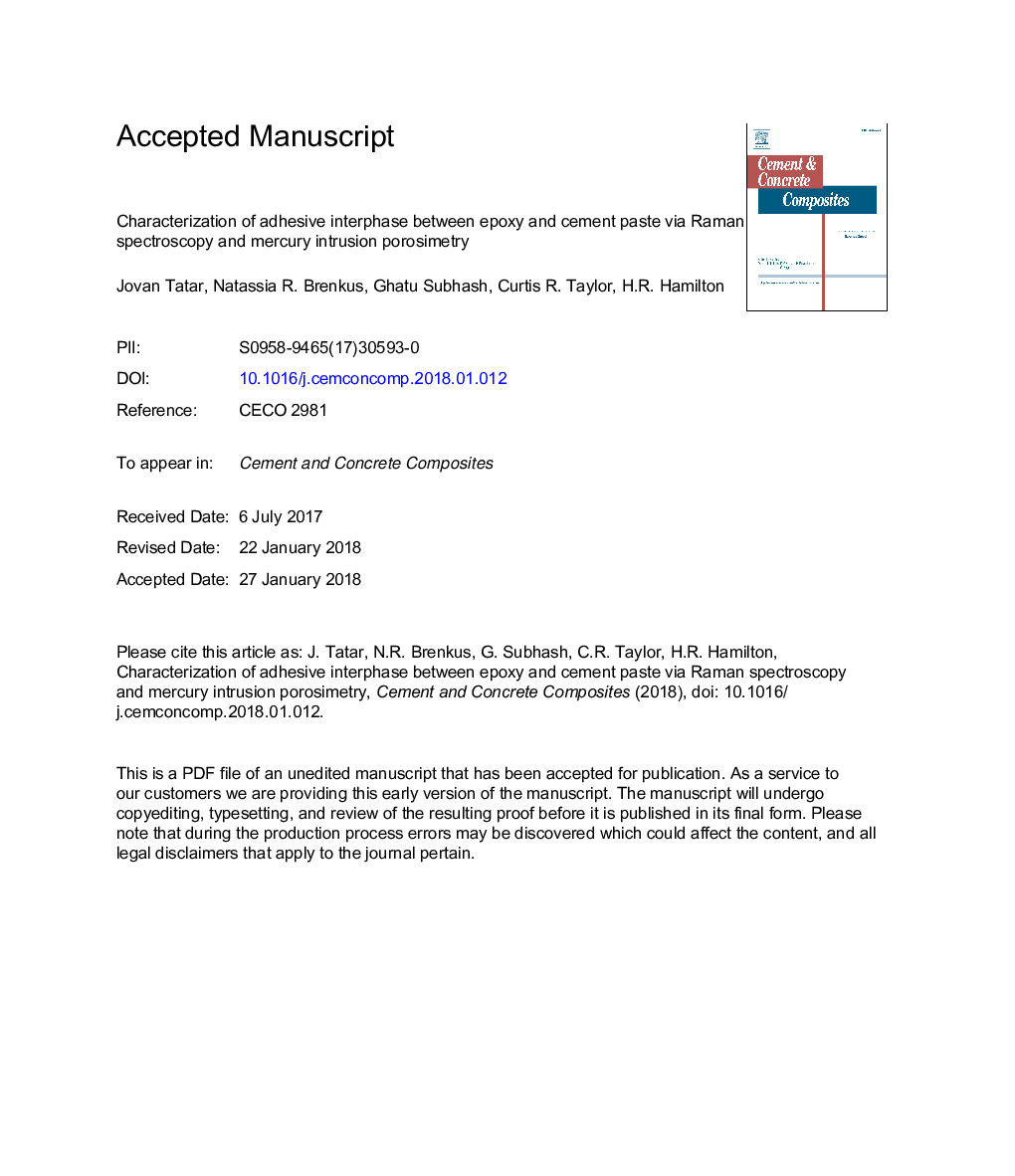| Article ID | Journal | Published Year | Pages | File Type |
|---|---|---|---|---|
| 7883929 | Cement and Concrete Composites | 2018 | 31 Pages |
Abstract
When exposed to harsh environmental conditions, the adhesive bond between epoxy and concrete was found to depend almost entirely on the effectiveness of the mechanical interlock which is contingent upon the ability of the adhesive to properly wet and penetrate the substrate. The current study is an investigation of the existence of a distinct interphase region within cement paste through the combined use of mercury intrusion porosimetry and Raman spectroscopy. A positive correlation between median pore size and depth of epoxy permeation into the cement paste substrate was observed. The Lucas-Washburn equation was found to accurately represent the driving mechanisms behind permeation of curing epoxy into the porous cement paste matrix. Interconnectivity of the capillary and gel pore structures was determined to play an important role in the permeation mechanisms. Analysis of relative conversion of epoxy via Raman spectroscopy in the interfacial region showed evidence of epoxy-cement paste interactions.
Related Topics
Physical Sciences and Engineering
Engineering
Industrial and Manufacturing Engineering
Authors
Jovan Tatar, Natassia R. Brenkus, Ghatu Subhash, Curtis R. Taylor, H.R. Hamilton,
